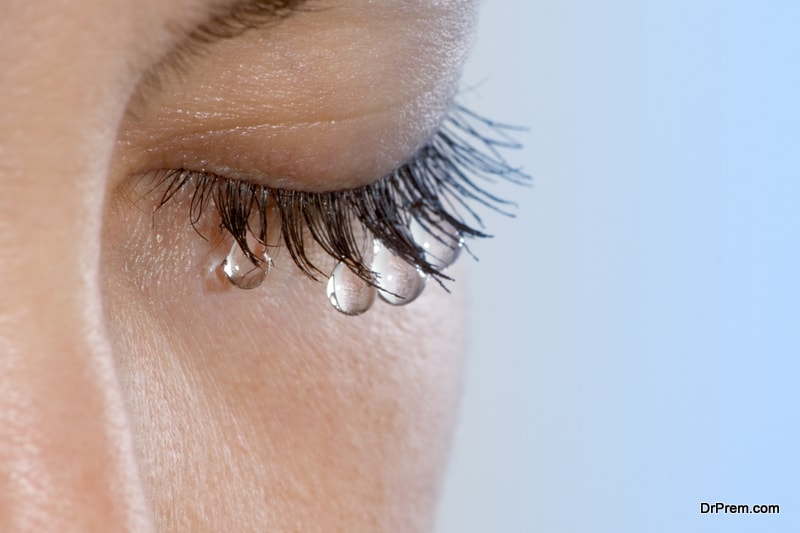Catharsis in psychology is a therapeutic treatment where an unwanted experience in the past can be turned into an outlet to vent extreme emotions. Another similar situation is recreated through activities, exposure to movies, stories and the like.
The idea is to bring out your emotions through intense expressions of fury, frustration, guilt or joy once you are exposed to a re-created stimulus. The term catharsis is coined from Greek word ‘ Catharsis ‘ which stands for ‘purification ‘ or ‘ cleansing ‘ the core of your mind.
How it is applied?
Several cathartic methods are applied by psychoanalysts to deliver a solution to the troubled mind that has experienced some sort of trauma in the past. The entire therapeutic process takes into account:
- A strong emotional ingredient in which an intense feeling is experienced and released.
- A cognitive element in which you acquire a fresh perspective of a situation.
The objective is to surmount the feelings of stress and exasperation and take your life along a meaningful turn. Productivity, inner bliss and a reason to live and live it king size dawn in the horizon.
Catharsis in psychoanalysis:
Catharsis in psychology and its remedial impact on a bruised mind was realized by the ancient Greeks. It was Joseph Breuer however, a colleague of Sigmund Freud, the legendary Austrian psychoanalyst and neurologist, who claimed the credit for the term. He had executed a pioneering task of exploring enigmatic realms of the human mind. Works pertained to applying catharsis to therapeutic treatment of minds in distress. He had finally succeeded in treatment of hysteria using the cathartic method.
The cathartic effects of treatment were clearly brought about when he put his patients under a hypnotic spell. It helped to get a flashback of traumatic experiences the patients encountered at some point of time in their lives.
The emotions that were suppressed quite dramatically came to surface when cathartic effects had a powerful impact on the subconscious mind. Sigmund Freud had admitted to the role of catharsis in psychology and its therapeutic potential.
Freud’s analysis:
So far as Freud’s reading goes, the human mind is made up of 3 vital components:
- The conscious mind. It enables us to be fully aware of our surroundings.
- The preconscious mind. It pertains to information that we may not be aware of in the present moment. With some homework, they too can be brought under the purview of total awareness.
- The unconscious mind. It relates to the enormous pool of thoughts, sensations and flashbacks that we are totally unaware of.
According to Freud, the unconscious mind plays a key role in determining our behavior and mental work, though it is left out of our periphery of awareness. The beauty of catharsis in psychology according to this psychoanalytic genius is that there exists a ray of hope. Psychotherapeutic procedures are available to bring back lost memory to vivid description. These tools are dream interpretation and free association.
Catharsis in everyday language:
Catharsis in psychology has found a platform in everyday language. Experiences which are bitter and painful arising from divorce, loss of employment, health issues, accident or sad demise of someone dear can be pacified through group discussion.
The group interaction where the members have been bitten by grief could bring up each one’s experience. A moment of intense feelings can be shared and hopefully that will bring a positive turn in life.
Present application of catharsis:
Catharsis in psychology is not always a sure-fire means to bring solace to minds in distress. Currently, the theory of calling back buried memories by hypnotizing the mind has lost much of its credibility.
This idea is often debated in the circle of psychoanalysts and the role of catharsis in psychology is seriously doubted. There are frequent instances where calling back repressed memories have been clearly doctored by the treating psychoanalyst.
Detection of hysteria has been substituted by dissociative and somatoform disorders. Professional psychiatrists have stopped diagnosing patients with hysteria. Hysterical symptoms determination and treatment don’t call for much of professional reward these days.
Examples of catharsis in psychology:
Catharsis stands for releasing intense feelings by external agents to which our mind is exposed. Here we go with a few examples:
- Music: It has a therapeutic effect and can play with your emotions. Since ancient times, music had handled emotions effectively. A sad person feels nice and his mood lifts listening to music laden with grief.
- Punching Bag: Parents of kids are often advised installation of punching bags. A furious kid can release his feelings hitting out at the bag. However, there is not enough scientific evidence to correlate punching a bag with venting of fury.
- Psychodrama: Here the patient enacts a moment of extreme stress he encountered in life. Yet another application of catharsis in psychology, the objective being achieving catharsis or emotional release.
- Art: Creative art has a cathartic impact. Spraying paint at random on the canvas may be an indication of inner frustration being vented out. A study revealed childhood sex abuse survivor who was approached by a family member, while sculpting clay models got relief from the past trauma.
- Primal therapy: The goal is to surface childhood trauma inflicted by parents. Their fury is made to release at a dummy parent sitting in front. The sight of parent brings back the painful moment before it is lost forever.
- Reliving traumatic events: Here the patient is made to recall a moment of intense mental scar, a lesion formed in the brain owing to past trauma. When the threatening scene comes to mind in a vivid portrayal, things ease out, gradually making him feel relieved.
- Writing: Writing could be immensely therapeutic. Psychologists often recommend journaling as a part of the treatment program. Images, situations and characters featuring in our text could deliver a feel-good experience. If someone reads it, it is an added bonus.
- Reading literature and watching movies: Reading books and watching movies can bring in catharsis. You relate yourself with the character you have read in text and watched on celluloid. Their challenges and struggles wake up your buried desires and definitely it is psychologically rewarding.
- Volunteering: An escape from trauma like rape can transform you to become a volunteer to help others survive a similar situation. This gives a great mental bliss to be able to contribute your part.
- Humor: Be it sarcastic, gentle or funny, humor goes a long way taking off stress from your mind. It has the capability of making you laugh and that is enough of a therapy.
- Confession: Here the patient with an experience of distress narrates events from their lives that could be guilt arising from misdoings. This has a cathartic effect, it makes them feel lighter.
Modern thoughts on catharsis and cathartic movie channels:
According to Sigmund Freud, Catharsis is a key technique and it can help eject emotion. Movies and theatrical performances can trigger such emotional outflow. Jacob Levy Moreno advocates psychodrama techniques where emotions flow in groups or in an individual through theatrical presentations.
Currently, many TV channels have a specific cathartic bend to it keeping in view its mind remedial potential. These channels help people get free from emotions that put them at cross roads of self doubt and confusion. Horror movie channels take care of our mind that gets a kick from fright instinct.
However, the efficacy of the system is still open to challenges for lack of enough scientific support. But it is always great to unlock our hidden emotions by some external input before they devastate the mind.













